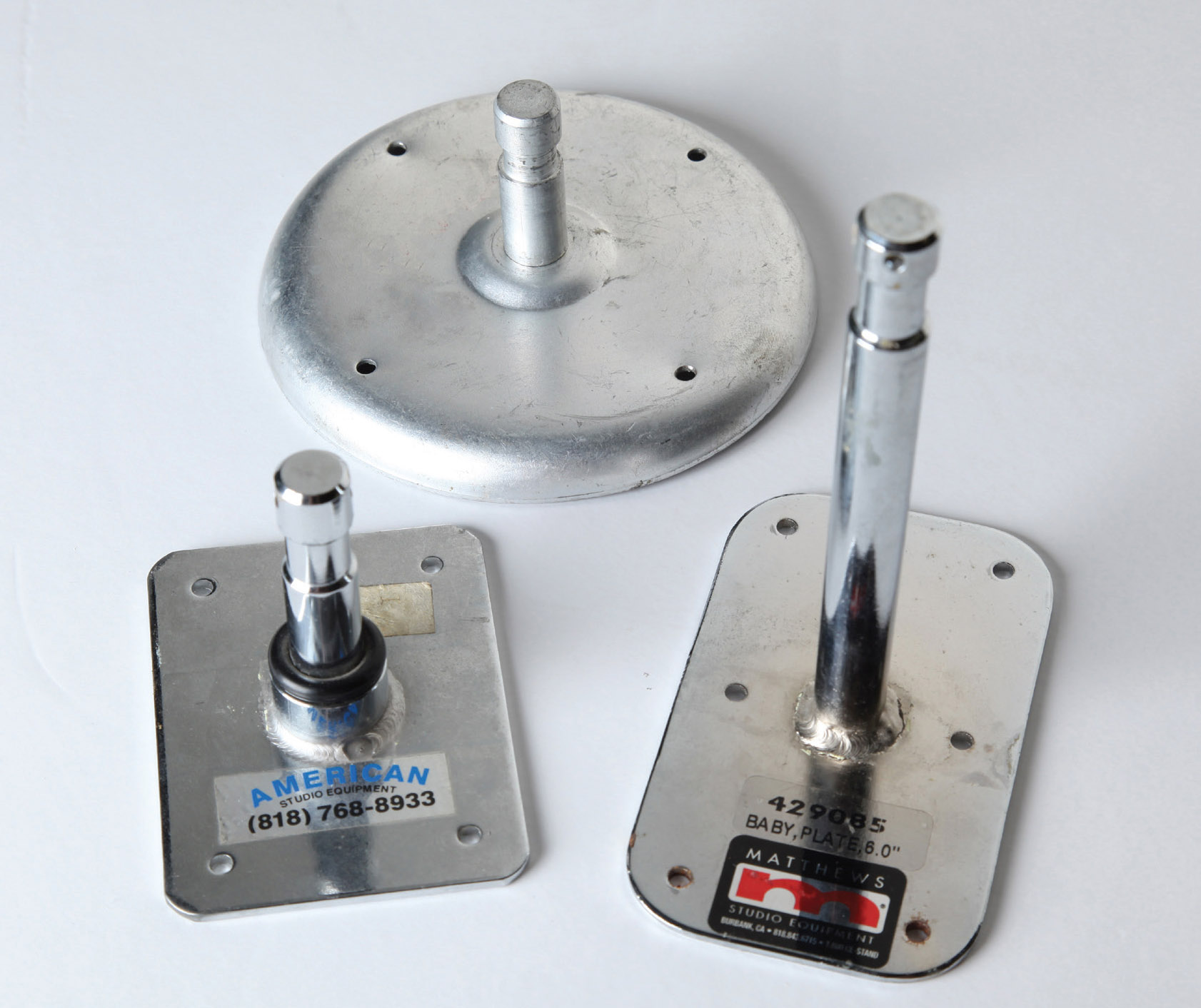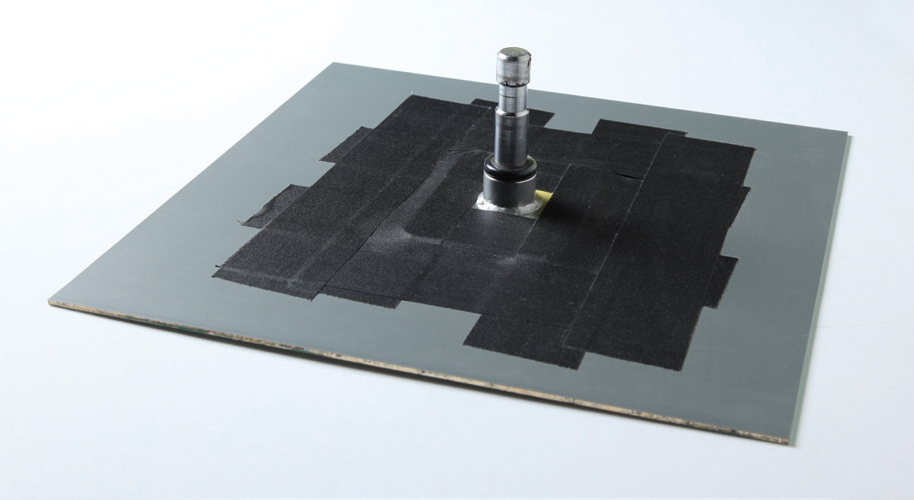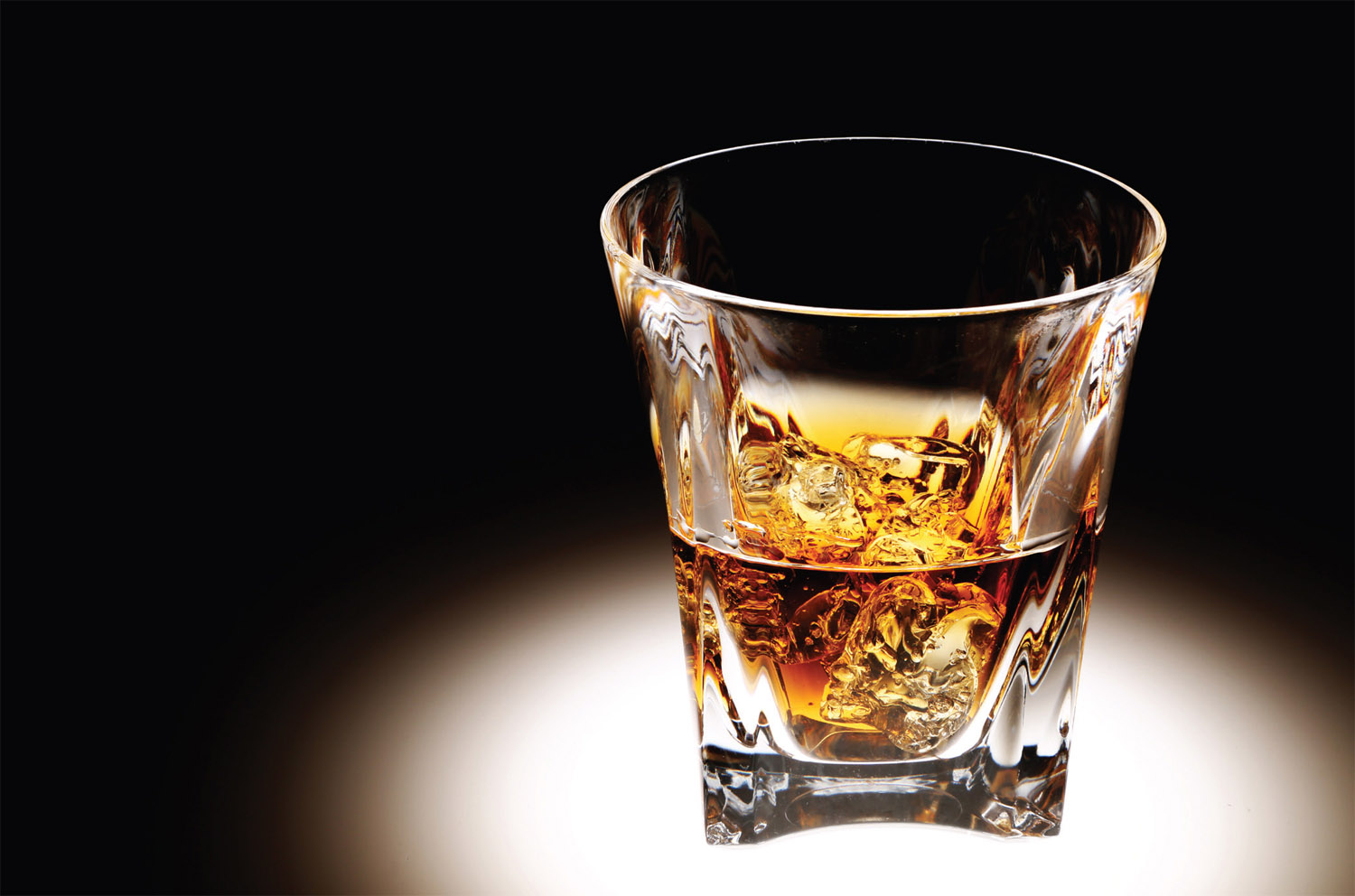Want to place a light as close to the floor as possible? Or mount one to a wall? A simple nail plate might be the answer.
A nail plate is not much more than the tip of a light stand welded to a base, but they’re built to stand free or be screwed into a wall or beam. I have a number of these, in various lengths from 2 inches to 6 inches, and I use them a lot. For example, if I need to create a flat, backlit light box for a product shot, I’ll mount a light on a nail plate and aim it straight up. Whether I use a gobo (like the shadow pattern under the beverage) or not is immaterial because the effect, which would be difficult to set up without a stable base, is what counts.

Nail plates are available in a variety of shapes and sizes.
You’ll note references to nail plates throughout this book. The mirror I used with my bookend bounce, as discussed in chapter 18, was attached to the boom arm by a nail plate that was simply taped to the back of the mirror.
A nail plate was screwed into the back of my reverse cookie (chapter 16) in order to allow movement. In both cases, movement was allowed by clamping the nail plate into a Matthews clamp, a device that is then mounted onto a light stand. Because there’s more than one axis involved, a lot of movement and repositioning is possible.

More is always better when taping onto glass.

An extremely useful accessory. Your studio may need more than one.

A cutout circle between a softbox and an acrylic sheet creates a spotlight effect.